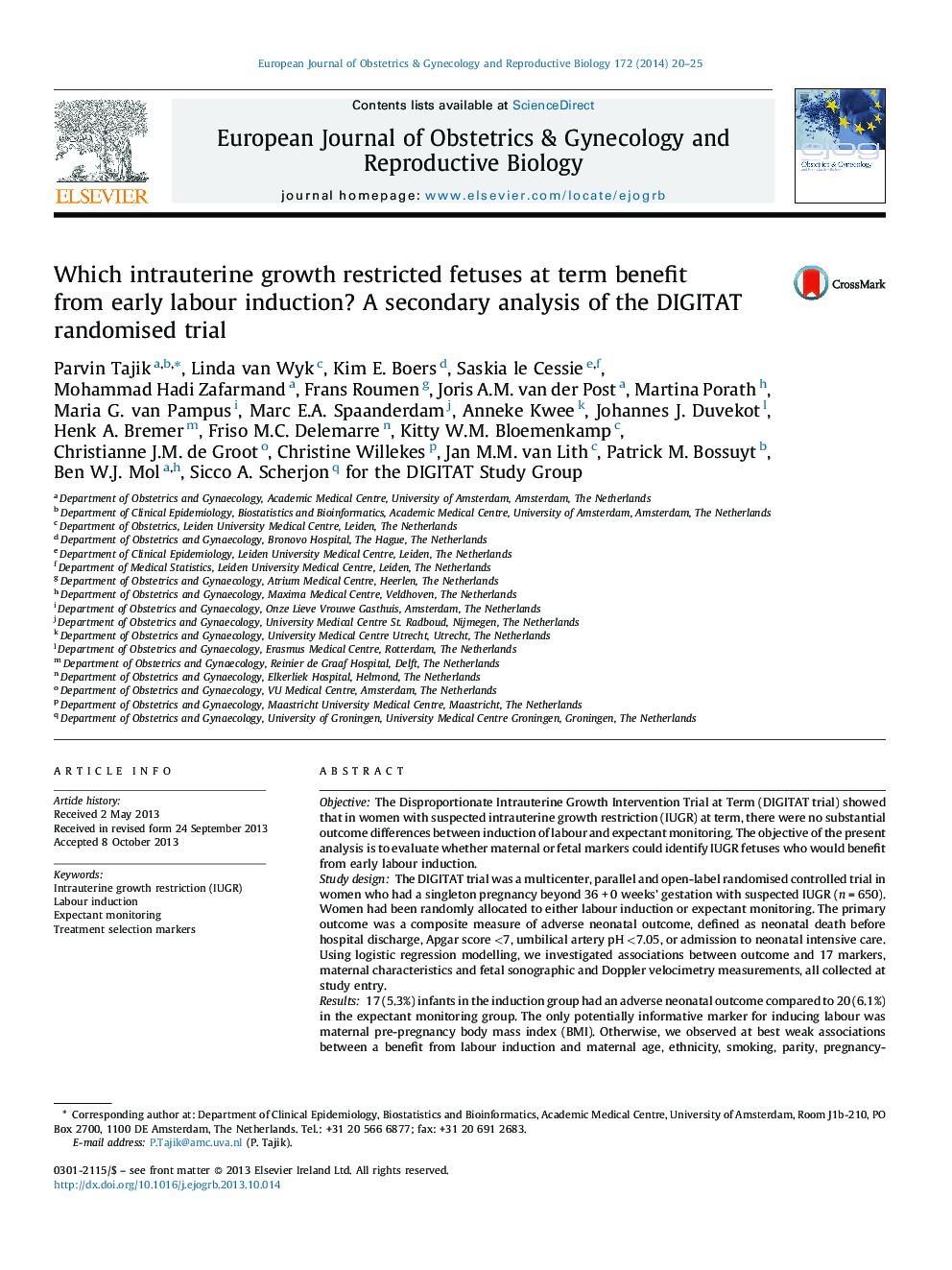| کد مقاله | کد نشریه | سال انتشار | مقاله انگلیسی | نسخه تمام متن |
|---|---|---|---|---|
| 6173858 | 1599809 | 2014 | 6 صفحه PDF | دانلود رایگان |

ObjectiveThe Disproportionate Intrauterine Growth Intervention Trial at Term (DIGITAT trial) showed that in women with suspected intrauterine growth restriction (IUGR) at term, there were no substantial outcome differences between induction of labour and expectant monitoring. The objective of the present analysis is to evaluate whether maternal or fetal markers could identify IUGR fetuses who would benefit from early labour induction.Study designThe DIGITAT trial was a multicenter, parallel and open-label randomised controlled trial in women who had a singleton pregnancy beyond 36 + 0 weeks' gestation with suspected IUGR (n = 650). Women had been randomly allocated to either labour induction or expectant monitoring. The primary outcome was a composite measure of adverse neonatal outcome, defined as neonatal death before hospital discharge, Apgar score <7, umbilical artery pH <7.05, or admission to neonatal intensive care. Using logistic regression modelling, we investigated associations between outcome and 17 markers, maternal characteristics and fetal sonographic and Doppler velocimetry measurements, all collected at study entry.Results17 (5.3%) infants in the induction group had an adverse neonatal outcome compared to 20 (6.1%) in the expectant monitoring group. The only potentially informative marker for inducing labour was maternal pre-pregnancy body mass index (BMI). Otherwise, we observed at best weak associations between a benefit from labour induction and maternal age, ethnicity, smoking, parity, pregnancy-induced hypertension or preeclampsia, Bishop score and gestational age, or fetal sonographic markers (gender, estimated fetal weight, body measurements, oligohydramnios, or umbilical artery pulsatility index and end diastolic flow).ConclusionIn late preterm and term pregnancies complicated by suspected intrauterine growth restriction, most of the known prognostic markers seem unlikely to be helpful in identifying women who could benefit from labour induction, except for maternal pre-pregnancy BMI.
Journal: European Journal of Obstetrics & Gynecology and Reproductive Biology - Volume 172, January 2014, Pages 20-25